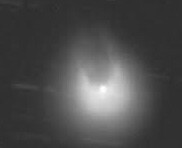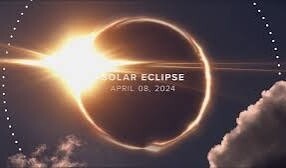Image



This year, skywatchers are abuzz with the return of Comet 12P/Pons-Brooks, also known by the more evocative moniker – the Devil's Comet. But where does this fiery name come from for a celestial object?
The last time Comet Pons-Brooks made a close approach to the Sun (perihelion) was in 1954. Its orbit around the Sun takes about 71 years, so 1954 was 70 years before its return in 2024.

The "devil horns" are the key to the Devil's Comet nickname. During one of its outbursts, the dust and gas spewing from the comet's core formed a distinctive shape – two pointed tails that resembled horns. This visual connection, especially with the public's fascination with anything appearing demonic, cemented the nickname “ The Devil’s Comet” for Pons-Brooks.
The "horns" on the Devil's Comet are temporary and depend on the direction of the outbursts and our viewing angle. Imagine a comet with a lumpy, irregular core. During an outburst, jets of gas and dust shoot out. Depending on which side of the lumpy core these jets erupt from, and how we see them on Earth, the dust cloud can take on a pointed shape.

So, the horns aren't always there, and they might not be perfectly symmetrical. They rely on a specific combination of the comet's activity and our perspective.
While some credit for the name might go to unpredictable outbursts, the horns are the more specific reason the comet became associated with the devil.

The comet creates unpredictable outbursts – dramatic increases in brightness that can happen without warning. These outbursts can make the comet appear to flare up, like embers from hell. Additionally, its 71-year orbit brings it back relatively infrequently, lending it an air of mystique.
This year's return is particularly interesting because Pons-Brooks' closest approach to the Sun (perihelion) falls just a few days before the total solar eclipse on April 8th, 2024. This creates a unique opportunity – if the comet is bright enough, it might be visible alongside the eclipsed sun, a sight some might find devilishly dramatic.

However, seeing the comet during the eclipse is not guaranteed. Comet brightness can be fickle, and the eclipse itself will make viewing more challenging. Binoculars or a telescope will likely be needed to glimpse Pons-Brooks, even if it's putting on a show.
As for the comet sparking during the eclipse – that's highly unlikely. Comets are mostly frozen ice and dust, and while they can experience outbursts, these are not fiery eruptions. The outbursts are caused by the icy core venting gas and dust, a cold volcanic process known as cryovolanism.
Even at its brightest, Pons-Brooks might only be visible with binoculars during the eclipse. The darkness from the eclipse itself would make seeing a faint comet even harder.
The Devil's Comet may or may not live up to its fiery name, but its return in April promises to be a fascinating sight for skywatchers lucky enough to catch a glimpse.
In other creepy 2024 news:
For the first time since 2015 a 13-year brood will emerge in the same year as a 17-year brood.
For the first time since 1998 adjacent 13-and 17-year broods will emerge in the same year.
For the first time since 1803 Brood XIX and XIII will co-emerge.
You will be able to see all seven named periodical cicada species as adults in the same year, which will not happen again until 2037. You will not see all seven named species emerge in the state of Illinois again until 2041.
Hold on as Spring 2024 might be the creepiest of leap years!
*Images sourced from Google.com/images